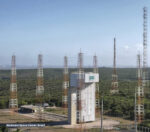Sierra Nevada Corporation (SNC) has introduced TRAX Edge, a modular software suite designed to deliver artificial intelligence (AI)-enabled mission autonomy and command-and-control (C2) capabilities at the tactical edge. Engineered to support unmanned systems and enhance situational awareness in contested environments, TRAX Edge is positioned as a key enabler of next-generation ISR operations and multi-domain integration.
TRAX Edge Overview: Modular Autonomy for Tactical Operations
TRAX Edge is the latest evolution of SNC’s Tactical Reconnaissance and Counter-Concealment-Enabled Radar (TRACER) ecosystem. Unlike traditional C2 systems that rely heavily on centralized processing or cloud connectivity, TRAX Edge is optimized for disconnected or degraded environments where edge computing is essential. The platform leverages embedded AI/ML algorithms to support real-time decision-making across a range of platforms—from unmanned ground vehicles (UGVs) to aerial drones and manned systems.
The core architecture of TRAX Edge is modular and open-architecture compliant. This allows seamless integration with existing government-owned software frameworks such as ATAK (Android Team Awareness Kit), MAVLink protocols for UAVs, and NATO STANAG interfaces. SNC emphasizes that the system can be tailored to specific mission profiles including route clearance, perimeter defense, reconnaissance-patrol missions, or logistics resupply automation.
Key Capabilities: Autonomy, Sensor Fusion, and MUM-T
TRAX Edge supports a wide array of autonomy features ranging from basic navigation to semi-autonomous mission execution. Key capabilities include:
- Sensor Fusion: Real-time integration of EO/IR cameras, LiDARs, radars, acoustic sensors for enhanced situational awareness.
- Manned-Unmanned Teaming (MUM-T): Human operators can control multiple unmanned assets via a unified interface or allow autonomous behaviors based on mission parameters.
- Edge Processing: Onboard compute modules enable low-latency analytics without reliance on cloud-based infrastructure.
- AI-Driven Decision Support: Embedded machine learning models assist with threat classification, route optimization, object detection/tracking.
- C2 Interoperability: Compatible with NATO-standard data links and battlefield management systems.
SNC notes that TRAX Edge was designed with human-machine teaming in mind—providing operators with intuitive interfaces while allowing autonomous agents to act within defined rulesets. This aligns with ongoing US DoD efforts under programs like JADC2 (Joint All-Domain Command & Control) which seek to integrate sensors-to-shooters across all domains using intelligent middleware layers.
Tactical Applications Across Domains
The flexibility of TRAX Edge allows it to be deployed across multiple operational domains:
- Ground Domain: Supports UGVs such as robotic mules or EOD platforms conducting patrols or logistics missions autonomously while reporting back via secure mesh networks.
- Aerial Domain: Integrates with Group I–III UAVs conducting ISR sweeps or target tracking missions in GPS-denied environments using onboard SLAM techniques.
- Civil-Military Uses: Potential applications include border surveillance by DHS-type agencies or disaster response coordination where infrastructure is compromised.
This cross-domain applicability makes TRAX Edge particularly relevant in hybrid conflict zones where adversaries may employ electronic warfare (EW), GPS jamming/spoofing or kinetic attacks against centralized command nodes. By decentralizing autonomy functions down to the platform level via edge compute modules running SNC software stacks like TRACER/TRAX family variants—the system ensures resilience under fire.
SNC’s Broader Strategy in Defense Autonomy
Sierra Nevada Corporation has steadily expanded its footprint in defense autonomy over the past decade. Beyond its work on airborne ISR pods and electronic warfare payloads for platforms like A-29 Super Tucano or MC-130 variants—SNC has invested heavily in modular open systems architectures (MOSA), AI/ML toolchains for embedded platforms, and secure communications middleware compatible with both NATO allies and Five Eyes partners.
The launch of TRAX Edge reflects this strategic trajectory—moving from sensor development toward full-stack autonomy solutions capable of operating independently at the tactical edge. According to company officials speaking at recent industry events such as AUSA and SOFIC 2024 previews, SNC aims to position itself as a prime integrator for next-gen autonomous mission systems supporting US Army modernization priorities under OMFV (Optionally Manned Fighting Vehicle), RCV-Light/Medium programs as well as SOCOM’s Hyper Enabled Operator initiatives.
Outlook: Integration Pathways & Field Testing
SNC has not disclosed specific customers yet but confirmed that multiple DoD components have evaluated early versions of the system during field exercises involving robotic combat vehicles (RCVs) and small UAV swarms. Future integration pathways may involve partnerships with prime contractors developing robotic platforms—such as Textron’s RIPSAW M5 or General Dynamics’ MUTT—with SNC providing the autonomy layer via TRAX Edge modules mounted onboard or networked wirelessly via secure datalinks.
The system’s compatibility with existing government-owned apps like ATAK also reduces friction during field deployment phases—a critical factor given DoD’s push toward rapid prototyping under OTA agreements rather than traditional acquisition cycles. SNC anticipates further testing throughout FY2024–2025 under Army Futures Command-sponsored events such as Project Convergence Tech Gateway trials or DEVCOM Soldier Center evaluations focused on human-autonomy interaction metrics.










